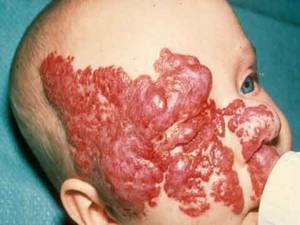WAIKOLOA, Hawaii – Topical beta blocker therapy may be an effective and safer alternative to oral propranolol for the treatment of infantile hemangiomas.
At last year’s annual meeting of the Society for Pediatric Dermatology, investigators from Toronto’s Hospital for Sick Children presented a pilot study of timolol 0.5% gel applied twice daily for a mean of 90 days as treatment for infantile hemangiomas in 5 girls, mean age 11.7 months. All improved, although none of the hemangiomas resolved completely, Dr. Ilona J. Frieden (photographed on the left) said at the annual Hawaii Dermatology Seminar sponsored by the Skin Disease Education Foundation.On a scale from -2 to +2, physicians rated the mean lesion improvement as +1.2 for size and +1.3 for color. There were no adverse events associated with the topical therapy. Oral propranolol is well tolerated in most cases of infantile hemangiomas, but the oral drug’s safety profile isn’t yet fully characterized. There have been some reports of occasional hypoglycemia, bradycardia, bronchospasm, hypotension, and other side effects, noted Dr. Frieden, director of pediatric dermatology at the University of California, San Francisco.

The first, large-scale clinical trial of oral propranolol for infantile hemangiomas is now underway in the United States and Europe under the sponsorship of Pierre Fabre, which holds a use patent on the therapy. Participants are being treated with propranolol at 1 or 3 mg/kg/day, divided BID.
This study is going to provide badly needed definitive information regarding efficacy, optimal dosing and duration of therapy, rebound phenomena, and side effects, Dr. Frieden said. She predicted the major side effect will prove to be hypoglycemia, which babies are especially vulnerable to due to their limited glycogen stores.
The serendipitous observation that propranolol seemed to be highly effective in the treatment of infantile hemangiomas (N Engl J Med. 2008; 358:2,649-51) has triggered tremendous interest in the medical world. Since then, a rapidly expanding anecdotal experience suggests propranolol not only stabilizes these vascular tumors, it actually shrinks them, often to a very impressive degree. Rebound has been noted following treatment discontinuation, but it is uncommon and often partial. Remarkably, the beta blocker can shrink fully grown lesions.
“That’s a fascinating aspect of this therapy. I’ve treated a 4-year-old after the tumor growth phase was long over, with significant improvement,” she recalled.
Nevertheless, Dr. Frieden added, anecdotes and small series don’t provide sufficient basis to consider propranolol as first-line therapy in most cases of infantile hemangioma. There are still concerns, especially from a safety standpoint.

“That’s a difference from just 4 months ago. Many people will now get an MRI of the brain before considering propranolol,” said Dr. Eichenfield, professor of pediatrics and dermatology at the University of California, San Diego.
His office has written protocols on propranolol therapy for infantile hemangiomas for the patient’s family and primary care physician. He recommends other dermatologists using the novel therapy do the same.
“You don’t want to just write out a propranolol prescription. You need to be allied with your pediatrician, who has to be aware of what you’re doing. There’s a good chance your patient’s pediatrician has never heard of propranolol for hemangiomas and will think you’re crazy. The family will start to get mixed messages,” he explained.


